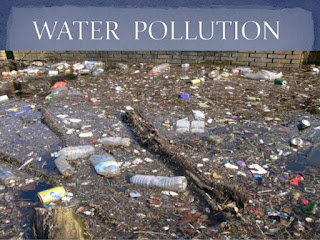Air Pollutants Linked To Higher Risk Of Birth Defect
Air pollutants linked to higher risk of birth defects, researchers find | News Center | Stanford Medicine: "Breathing traffic pollution in early pregnancy is linked to a higher risk for certain serious birth defects, according to new research from the Stanford University School of Medicine.
The finding comes from a study examining air quality and birth-defect data for women living in California’s San Joaquin Valley, one of the smoggiest regions of the country. “We found an association between specific traffic-related air pollutants and neural tube defects, which are malformations of the brain and spine,” said the study’s lead author, Amy Padula, PhD, a postdoctoral scholar in pediatrics. The research appears online today in the American Journal of Epidemiology.
“Birth defects affect one in every 33 babies, and about two-thirds of these defects are due to unknown causes,” said the paper’s senior author, Gary Shaw, PhD, professor of neonatal and developmental medicine. “When these babies are born, they bring into a family’s life an amazing number of questions, many of which we can’t answer.”
The scientists studied 806 women who had a pregnancy affected by a birth defect between 1997 and 2006, and 849 women who had healthy babies during the same period. The study examined two types of neural tube defects (spina bifida, a spinal-column malformation, and anencephaly, an underdeveloped or absent brain); cleft lip, with or without cleft palate; cleft palate only; and gastroschisis, in which the infant is born with some of his or her intestines outside the body.
All women studied resided in an area of California known for poor air quality — the San Joaquin Valley — during the first eight weeks of their pregnancies, a window of time when many birth defects develop. The researchers asked each woman for her home address during this period and scored subjects’ exposure to air pollutants using data collected by the Environmental Protection Agency as part of federally mandated air-quality monitoring. The pollutants assessed included carbon monoxide, nitrogen oxide, nitrogen dioxide, particulate matter and ozone, as well as local traffic density.
After controlling for factors such as race/ethnicity, maternal education and multivitamin use, women who breathed the highest levels of carbon monoxide were nearly twice as likely to have a baby with spina bifida or anencephaly as those with the lowest carbon monoxide exposure, the study found. Nitrogen oxide and nitrogen dioxide exposures were also linked to increased risk for these defects; women with the highest nitrogen oxide exposure had nearly three times the risk of having a pregnancy affected by anencephaly than those with the lowest exposure, for example. Further studies are needed to examine the combined effects of multiple pollutants.
The quality of earlier research linking air pollution and birth defects has been hampered by the difficulty of getting reliable data on women’s exposure to pollutants. The new study is the first to assess women’s pollutant exposures in early pregnancy, when birth defects are developing, rather than at birth.
Further studies are needed to confirm the results of the new research and to examine other pollutants, as well as other types of birth defects, the researchers said."
'via Blog this'





Comments
Post a Comment